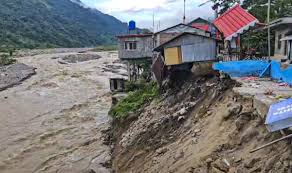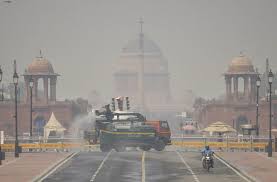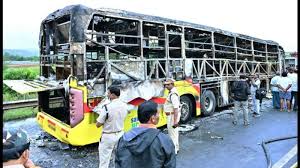Darjeeling Schools, Colleges Shut from October 8 to 10 Amid Landslide Crisis
DARJEELING, West Bengal—In a precautionary move in response to heavy rainfall and multiple landslides, the Gorkhaland Territorial Administration (GTA) has ordered all schools and colleges in Darjeeling (and parts of Kalimpong) from October 8 to October 10, 2025.
The shutdown comes amid widespread disruption in the region. Torrential rains on October 4–5 have triggered serial landslides, damaging roads, bridges and connectivity in several hilly areas. According to reports, at least 18 people have been killed and several are missing in the Darjeeling hills.
Safety First: GTA Takes Precautionary Steps
The educational wing of the GTA issued an order stating that all institutions under its jurisdiction, from primary to higher education, would be closed for three days. The closure is aimed at ensuring the safety of students, teachers and staff amid unstable ground conditions and disrupted transport links.
In an earlier statement, GTA Chief Executive Officer Anit Thapa commented that “Every area of the GTA has been cut off; there is no road connectivity. We are assessing the damage and compiling a report to submit to the government. We are hoping for help and planning a temporary Bailey bridge.” Meanwhile, West Bengal Chief Minister Mamata Banerjee confirmed that two iron bridges have collapsed, several roads have been burnt, and large tracts of land are submerged.
Widening Impact: Lives, Homes, Connectivity
The meteorological attack has caused significant damage in North West Bengal. In Mirik alone, more than 100 houses have been destroyed, another 300–400 partially damaged, and more than 80 inhabitants were forced into relief camps. Mirik has lost thirteen lives, including children and the whole family. Across the Darjeeling hills and nearby areas, the death toll has increased, and the search team is working to detect missing persons. Two iron bridges in the area collapsed, and the major road links, including parts of NH-10, have been irreparable.
The landslide also affected the Darjeeling Himalayan Railway (DHR). The services on the NJP-Dearning route were suspended after slide-inspired damage near Kursong
Residents in remote hamlets are being isolated, as there is no access to medical aid, food supply, or essential services. The standing area of the joint area with red soil geology makes it prone to slope failures, especially under heavy rains. Locals have said that the disaster is not only natural, but the unplanned construction and lack of a hillside zone are exacerbated by drainage systems.
Students, employees and institutional challenges
The decision to suspend educational activity is a major disruption. Many boarding schools in the hills host students from all over India, Bhutan, Nepal and Bangladesh. Shul administrators say they will accommodate any boarder that returns during closure, although significant logical challenges remain. Some schools are planning to conduct additional classes on Saturday in the coming weeks.
Inspectors have asked schools to submit images of any structural damage to classrooms, roofs, stairways, and grounds via WhatsApp so that repair strategies can be prioritized. In particular, there is concern about weakening foundations and landslide-prone zones behind school buildings.
Some institutions have already reported damage to their premises — cracked walls, waterlogging, and erosion in playgrounds and peripheral areas. The reopening of schools is contingent on safety clearances and connectivity restoration.
Reopening & Recovery: What Comes Next
Originally, many media reports projected that classes would resume on October 13 — after the weekend break — giving authorities time to repair roads and ensure safety. However, in view of continuing connectivity issues, some schools and media outlets suggest the closure might extend until October 13.
To restore mobility, the National Highways & Infrastructure Development Corporation Limited (NHIDCL) has placed restrictions on heavy commercial vehicles on NH-10 (linking Sikkim and Kalimpong) on certain weekdays, citing safety concerns. Meanwhile, alternative routes to Darjeeling via Pankabari and via NH-110 have been partially reopened. The route to Kalimpong is also reported to be passable via circuitous roads.
State and central agencies are jointly mobilising disaster relief teams, engineering contingents, and funds for rehabilitation. West Bengal Chief Minister Mamata Banerjee has announced compensation packages for families of the deceased and urged officials to open community kitchens and assistance camps in affected areas.The Centre has also been asked to step in for major infrastructure repairs.
In remote village clusters, relief camps have been set up, and search-and-rescue teams continue to comb through debris for survivors. Locals warn that with the continued rain forecast, the risk of further landslides remains high
The Broader Challenge
The closure underscores the persistent vulnerability of the Darjeeling hills to climate variabilities, unplanned development, deforestation, and unstable slope engineering. Experts caution that such shutdowns may become more frequent unless systemic measures are taken to reinforce hillside infrastructure, improve drainage, and regulate construction in fragile zones.
For now, the top priorities are rescue, relief, restoration, and ensuring that when students return to school, they do so in a safe environment. The coming days will test the resilience of communities and the speed of institutional response.













